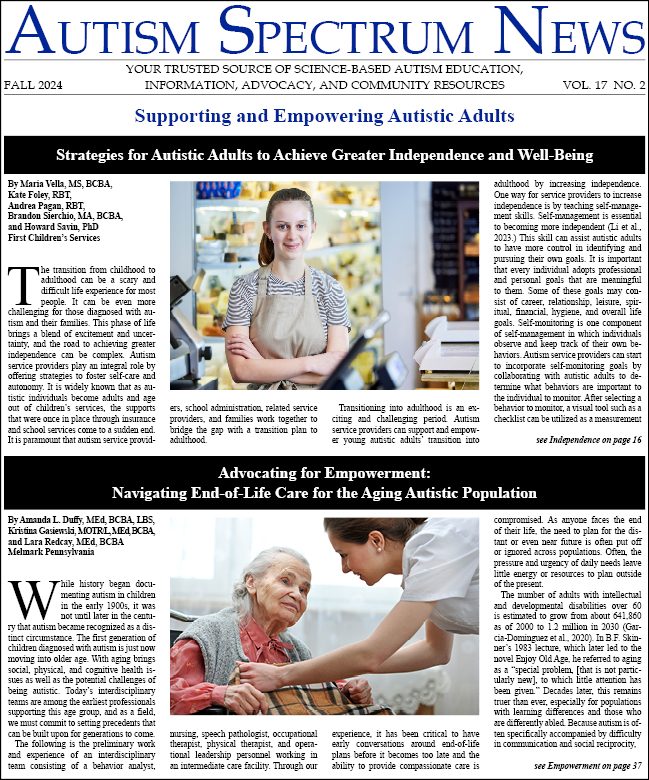-
Building Self-Advocacy Skills in Autistic Young Adults
Adulthood is the time when teachers and parents can no longer advocate for their children the same way they could during the school-age years. Much of it becomes the responsibility of the adult. At the beginning of my career, I had the opportunity to develop an evidence-based curriculum in...
-
The Power of Sensory Integration: Enhancing Communication for Non-Speaking Individuals
Communication is complex and extends beyond verbal expression. This is especially important to understand in non-speaking individuals. Non-verbal cues such as facial expression, body language, and sensory experiences play crucial roles in conveying and understanding messages. Sensory integration...
-
Rights and Challenges for Autistic People with Communication Disabilities in the Legal System
Police should be the last resort.... I shouldn’t have to call the police if my son is having a meltdown. When I get up in the morning, I say, “Thank God he’s not dead,” and “Thank God I’m not dead.” - Kerima Çevik, activist and parent of a nonspeaking autistic son (Sokol,...
-
Enhancing Communication and Accessibility: Assistive Technology for Individuals with Autism
What do a wheelchair, closed captioning on a television screen, and a visual schedule all have in common? They are part of an extensive list of products or services that enable those with disabilities to access activities of daily living. Like a wheelchair, assistive technology can provide...
-
How to Advocate for Your Nonspeaking or Minimally Verbal Child or Adult
Over the last decade, there has been an increase in autistic self-advocates coming into the public eye through their incredible means to advocate for themselves - and others like them. These individuals have become a powerful voice for boards, committees, research and quality improvement...
-
Language Development and Communication for Nonverbal Autistic Children
Autism spectrum disorder is one that has a broad range of symptoms, but many with its diagnosis have similar “core” symptoms. Difficulties with language and communication is a shared struggle for many. Thankfully, with today’s constantly evolving technology and research, individuals with...
-
If My Son Could Speak
My son, Tariq, is turning 40 this November. He is autistic, as well as nonspeaking, and he has a severe intellectual disability. Like many other parents of nonspeaking autistic children, I have had imaginary conversations with him many times over the years, and I wonder what he would tell me if he...
-
Breaking Down the Barriers of Social Communication for Young Adults
The transition from adolescence to adulthood is an important and transitory juncture in the lives of modern young individuals. This exciting and oftentimes anxiety-inducing time brings with it a host of challenges: increased independence, heightened self-awareness, the taking on of more personal...
-
Introducing the Use of Behavior Skills Training to Achieve Staff Proficiency in the Use of PECS
Learning to communicate using speech and language is one of the primary tasks for young children. When delays are observed in language acquisition, they are considered one of the earliest indicators of developmental deficits that could potentially lead to social, behavioral, and academic...
-
Communication Modality Decisions for Individuals with ASD
Individuals with autism spectrum disorders (ASD) have complex needs, and their challenges include social deficits, communication difficulties, and behavioral challenges (APA, 2017). The needs of individuals with ASD necessitate the expertise of several professions, including behavior analysis and...





